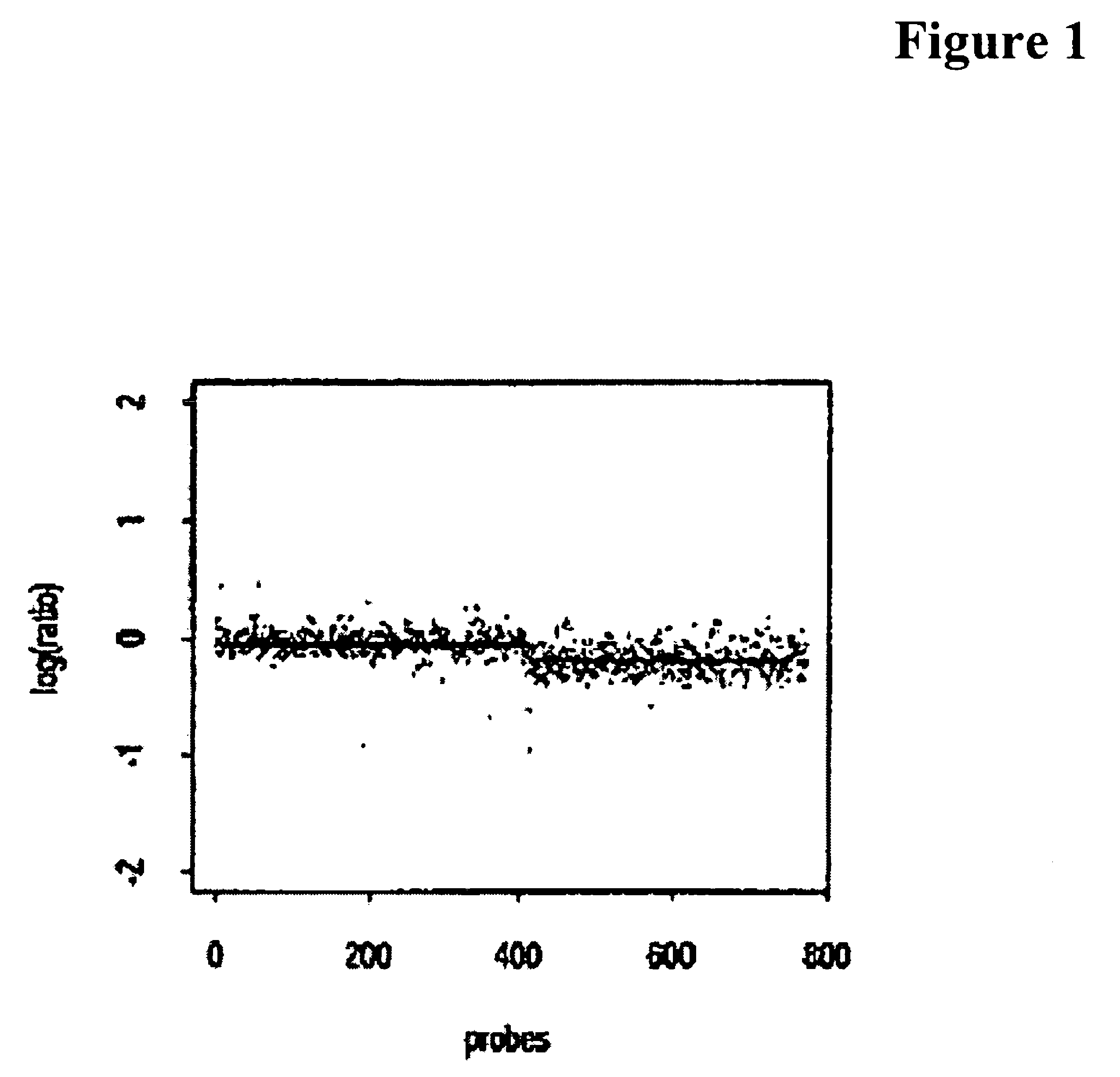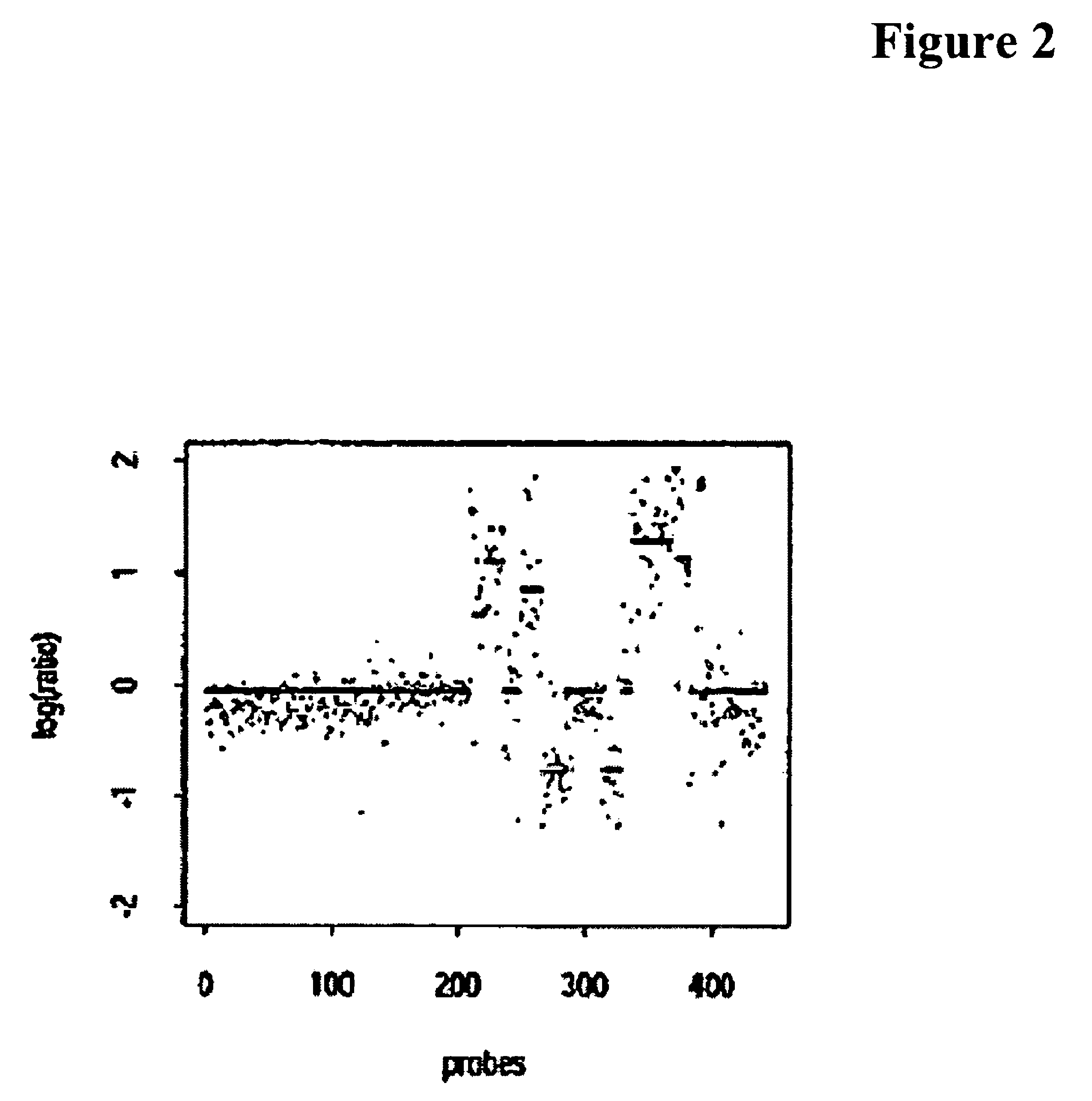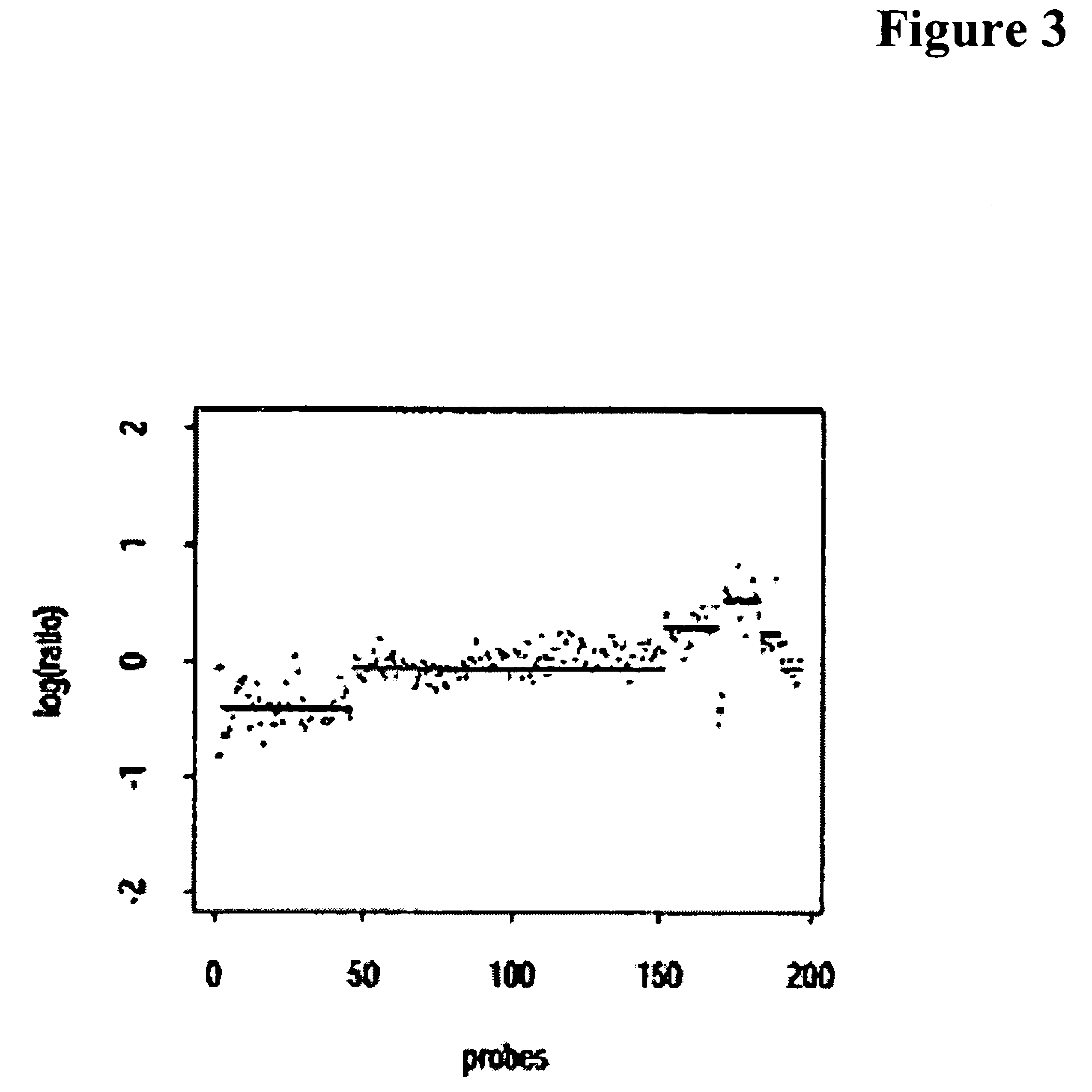Systems, methods and software arrangements for detection of genome copy number variation
a technology of genome copy number and software arrangement, applied in the field of systems, methods and software arrangement for determination of variations, can solve problems such as data worthless without the use of a proper data-analysis procedur
- Summary
- Abstract
- Description
- Claims
- Application Information
AI Technical Summary
Benefits of technology
Problems solved by technology
Method used
Image
Examples
first exemplary embodiment
I. First Exemplary Embodiment
A. Exemplary Model
[0026]A probabilistic generative model for observed copy number data is described herein below. The exemplary model is a Bayesian-type model, in that it employs parameterized prior distributions, and uses the posterior distribution function to estimate the underlying model. The kinds of prior models considered, however, may preclude the use of Bayesian estimators. Thus, a maximum a posteriori (MAP) framework was used to estimate the underlying model.
[0027]Prior Structure in the Probabilistic Model
[0028]The statistical model generally only takes into account the major sources of copy number variation in an abnormal genome. It is described by the two scalar parameters 0≦pr, pb≦1 and captures a few essential aspects of the true biological mechanisms.
[0029]Such a model assumes that there is a normal copy number distribution for probes, and that the probability for a particular probe being normal is pr (for explained probability). If a probe...
second exemplary embodiment
II. Second Exemplary Embodiment
A. Overview
[0081]Generally, somatic genomic alterations MAY be inferred using any of the many whole-genome microarrays: e.g., BAC Arrays, ROMA (Nimblegen), Agilent and Affymetrix chips, they appear to require varying algorithmic approaches in data-clean-up, noise-removal, background-correction, and normalization. In particular, the Affymetrix gene-chip technology has proven richer, but more recalcitrant than the rest, as Affymetrix technology faces many fundamental difficulties. Some exemplary difficulties include a large fraction of unusable mismatch probes, wild statistical variations from one experiment to another, noise introduced by PCR process and cross-hybridization, polymorphic variations in biallelic data, and most importantly, wide-variability in the thermodynamic properties of multiple probes in a probe set. The exemplary embodiment may employ a statistical algorithm to tame such corrupting noises through a systematic but incremental charact...
third exemplary embodiment
III. Third Exemplary Embodiment of the Invention
A. Introduction
[0118]Microarray-based comparative genomic hybridization (array-CGH) approach may provide rapid genome-wide assays and indicate copy-number variations of chromosomal segments in a tumor genome. For instance, chromosomal segments, deleted in a single or both copies of the diploid genomes of a group of cancer patients, may point to a location of tumor suppressor genes implicated in a cancer. A multipoint statistical method, presented here, may be capable of estimating the location of tumor suppressor genes by analyzing array-CGH data characterizing segmental deletions (hemi- or homo-zygous) in cancer genomes. One exemplary method may compute a multipoint score for intervals of consecutive probes and may also identify smaller sets of predictive probes that can then be used as biomarkers. The method may be applied to different simulated datasets as well as a real dataset. Generalization of the exemplary embodiment to detecti...
PUM
| Property | Measurement | Unit |
|---|---|---|
| degrees of freedom | aaaaa | aaaaa |
| dimensions | aaaaa | aaaaa |
| length | aaaaa | aaaaa |
Abstract
Description
Claims
Application Information
 Login to View More
Login to View More - R&D
- Intellectual Property
- Life Sciences
- Materials
- Tech Scout
- Unparalleled Data Quality
- Higher Quality Content
- 60% Fewer Hallucinations
Browse by: Latest US Patents, China's latest patents, Technical Efficacy Thesaurus, Application Domain, Technology Topic, Popular Technical Reports.
© 2025 PatSnap. All rights reserved.Legal|Privacy policy|Modern Slavery Act Transparency Statement|Sitemap|About US| Contact US: help@patsnap.com



